
He may be near-sighted, but it was Mr. Magoo who could see the way and blaze a trail for all future animated television Christmas specials. Mr. Magoo’s Christmas Carol debuted on December 18, 1962, on NBC, making it the very first animated Christmas special to be produced for television. It aired two years before Rudolph the Red-Nosed Reindeer, three years before A Charlie Brown Christmas, and four years before Dr. Seuss’ How the Grinch Stole Christmas.
However, Mr. Magoo’s Christmas Carol hasn’t received the attention, and the annual airings that have become part of the tradition of so many other TV specials. This is a shame, as this retelling of the familiar tale brings its unique spin in terms of story, animation, and music.
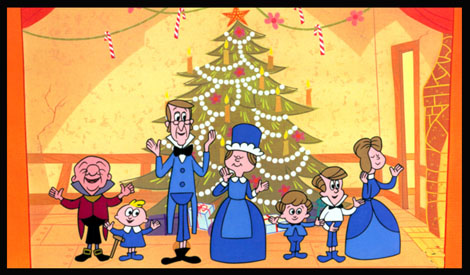
With this first special celebrating its sixtieth anniversary this year, it’s the perfect time to look back and celebrate what happened when Mr. Magoo and Charles Dickens’s classic Christmas story met head-on.
Of course, Mr. Magoo was already an established animated star when Mr. Magoo’s Christmas Carol made its debut. His first appearance came in 1949’s Ragtime Bear, followed by many successful and Academy-Award-winning cartoons starring the short-statured man who would find himself in precarious situations (which he would be unaware of) due to his near-sightedness.
Mr. Magoo was created by animation director John Hubley and writer Millard Kaufman for United Productions of America (UPA) Animation Studios, which produced animation with its distinct graphic style.
In 1960, UPA was purchased by film producer and distributor Henry Saperstein, who saw the future potential for animation produced specifically for television. As part of this, the studio’s star got his own show, aptly titled, The Mr. Magoo Show, which proved successful.
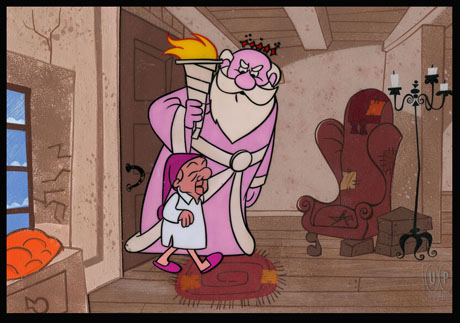
It was UPA’s Director of Programming, Lee Orgel, who is credited with the concept of adapting A Christmas Carol for television with Mr. Magoo in the lead as Ebeneezer Scrooge.
The story would essentially stay the same – a miserable miser visited by three ghosts on Christmas Eve, and he learns the errors of his ways just in time for Christmas morning. Mr. Magoo’s Christmas Carol would re-arrange the appearances of the Ghosts of Christmas Past, Present, and Future – in this version, the Present Ghost appears to Scrooge first, followed by the Past and Future.
That isn’t the only differentiator in the special, however, as there is a “story within the story” of Mr. Magoo’s Christmas Carol. It’s not just a straightforward re-telling, but instead, it features Mr. Magoo as himself starring as Scrooge in a Broadway musical version of A Christmas Carol.
This allows the special to be “bookended” in a contemporary setting, with Magoo as his usual, absent-minded, near-sighted self and “in character” as Scrooge. This also allowed for the addition of music and some beautiful songs.
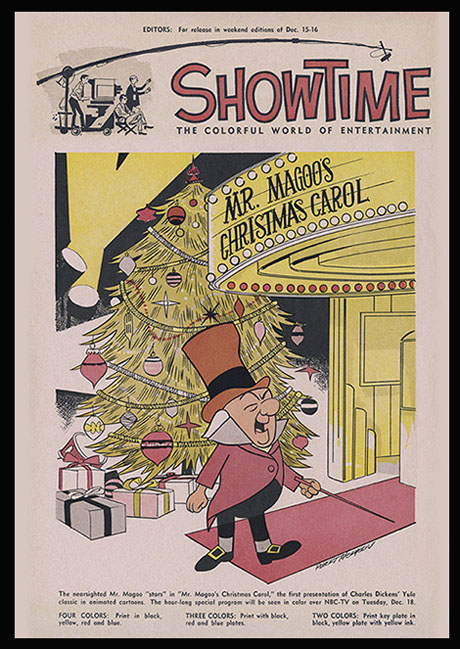
Each is an impressive, Broadway-caliber number, which is no surprise when one learns that Jule Styne and Bob Merrill crafted them. Two years after Mr. Magoo’s Christmas Carol, the two songwriters would bring Funny Girl to Broadway. Additionally, Styne would collaborate with Stephen Sondheim on the music for Gypsy and with Leo Robin on Gentlemen Prefer Blondes, while Merrill would create the music and lyrics for Carnival.
Their contributions to Mr. Magoo’s Christmas Carol are not only woven into the story, as they would be in their Broadway work, but also contain the same infectious, emotional, and striking songs.
Among the highlights: Magoo singing about how much he loves money in “Ringle, Ringle,”; the beautiful ballad “Winter was Warm,” sung by Magoo’s one-time love Belle; the heartbreaking “Alone in the World,” performed by lonely young Scrooge and what has become the special’s signature song, “The Lord’s Bright Blessing,” (many a generation now sings about “Razzleberry dressing” every Christmas season, thanks to Mr. Magoo’s Christmas Carol). For more on the special’s soundtrack, here is part one of Greg Ehrbar’s two-part Cartoon Research article.
The music, coupled with distinctive backgrounds and character design that is not only indicative of UPA but also inspired other studios of the time, brings a comforting tone to Mr. Magoo’s Christmas Carol as well as memories of animation of the era.
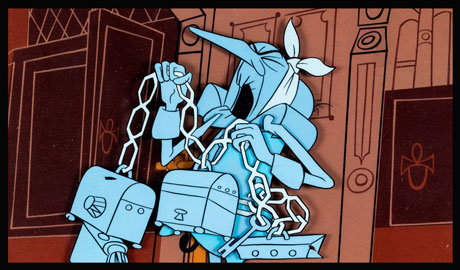
Adding to this is a wonderful voice cast. Not only is Jim Backus, the iconic, original voice, on point as the character, but he also delivers a heartfelt performance as Scrooge. There’s also the smooth voice of Jack Cassidy as Bob Crachit, Royal Dano perfectly haunting as Jacob Marley, Jane Kean providing the lovely voice of Belle, and legendary voice actors Paul Frees (as several characters, including the hilariously creepy Undertaker) and Joan Gardner (whose characters include Tiny Tim, played by another of the UPA’s stars, Gerald McBoing-Boing).
Initially airing on NBC on December 18th, 1962, Mr. Magoo’s Christmas Carol, directed by animation legend Abe Levitow, was rerun by the network each season for five more years. After that, the special disappeared for several years, eclipsed by other Christmas specials that were brought back annually.
In the 70s and 80s, Mr. Magoo’s Christmas Carol aired on syndicated stations and in the 1990s on cable, including the Disney Channel and USA Network, allowing it to be re-discovered. Since then, the special could be found everywhere from Me-TV, the CW, and even back on NBC in 2014 (although sometimes, the Broadway sections would be cut).
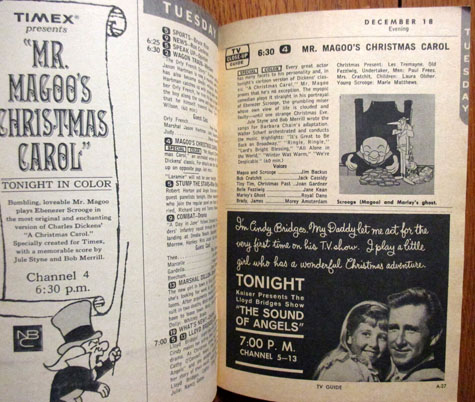
It finally made its debut on DVD and Blu-ray, and appreciation and significance as the first animated Christmas special has only grown in the past six decades.
Assisting with this much-delayed recognition is author Darrell Van Citters excellent 2009 book, Mr. Magoo’s Christmas Carol: The Making of the First Animated Christmas Special. Van Citters employs excellent research and takes a fascinating deep-dive into all aspects of the special’s production, including reproductions of original artwork.
In the book, Van Citters sums up the impact of Mr. Magoo’s Christmas Carol when he writes:
“No one at the time realized the special’s place in television history, and certainly no one expected it to become a Christmas perennial. It remains, though, a bittersweet reminder that making filmed entertainment is a serendipitous confluence of many elements beyond an individual’s control; it’s as much about people as it is, ironically, about vision. A lot of factors have to line up to create a classic, and fortunately, in 1962, a lot of them did.”
Merry Christmas to all, and, God Bless Us, Everyone!
- An Eye for A Classic: The 60th Anniversary of “Mr. Magoo’s Christmas Carol” - December 22, 2022
- A Very Merry Mickey: The 70th Anniversary of “Pluto’s Christmas Tree” - December 19, 2022
- A Fine French Feline Film: The 60th Anniversary of “Gay Pur-ee” - December 12, 2022


 December 22nd, 2022
December 22nd, 2022  Michael Lyons
Michael Lyons  Posted in
Posted in  Tags:
Tags: 






